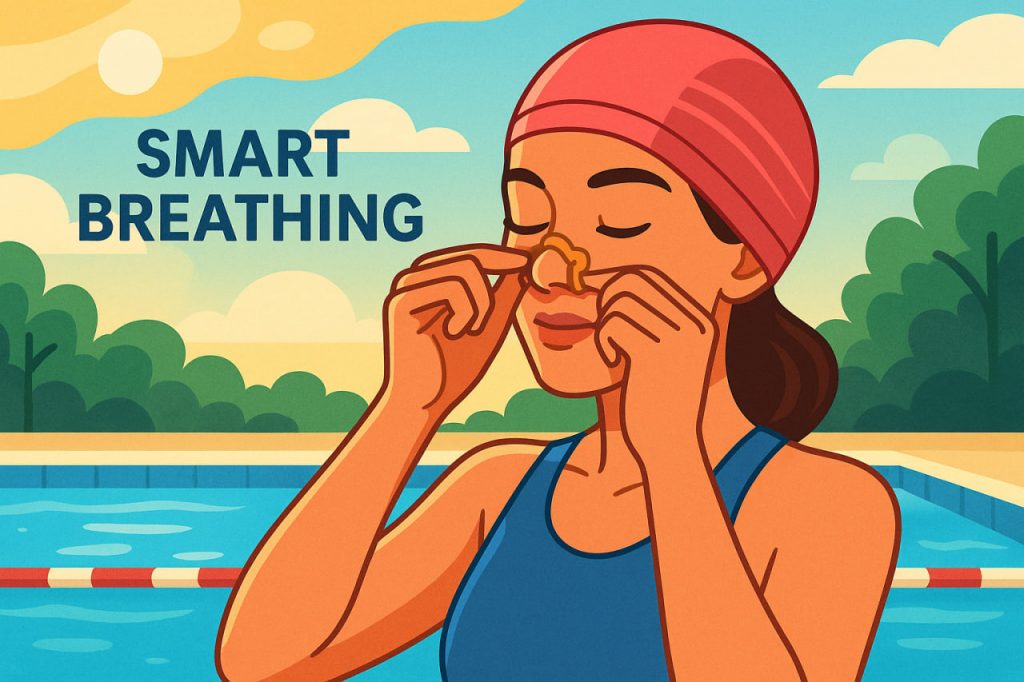Nose clips, though simple in appearance, serve a surprisingly wide range of functions—from professional swimming and medical applications to beauty practices and breathing exercises. These small devices, typically made of plastic, silicone, or metal, are designed to pinch the nostrils closed for various practical or therapeutic reasons. While some use them for sports performance, others employ them in daily routines to improve nasal breathing habits or prevent unwanted inhalation of substances. Despite their size, nose clips combine functionality, science, and even a touch of fashion in modern wellness culture.
The Origin and Common Uses of Nose Clips
Nose clips were first popularized in the early 20th century, particularly in swimming and synchronized diving. Competitive swimmers used them to prevent water from entering the nasal passages, allowing better focus on breathing technique and underwater control. Over time, nose clips became essential for athletes performing complex movements under water. Beyond sports, they’ve found their way into other fields—used by musicians who play wind instruments, by individuals practicing breath control in yoga, and even in certain medical or cosmetic therapies.
How Nose Clips Work
The principle behind a nose clip is simple: gentle pressure on the nostrils prevents air, water, or other particles from passing through. Most nose clips are ergonomically designed to fit comfortably on the bridge of the nose, often padded with silicone for grip and comfort. In swimming, this keeps water out of the nasal cavity, reducing irritation and infection risk. In breathing exercises, the clip helps individuals strengthen mouth breathing control or train for nasal resistance—a method sometimes used in athletic conditioning and singing practice. However, prolonged use without proper guidance can lead to discomfort, so moderation is key.
Health and Fitness Applications
In sports and health routines, nose clips support both performance and well-being. Swimmers, freedivers, and synchronized swimmers rely on them for safety and precision underwater. In yoga and certain breathing therapies, temporary nasal restriction is used to train lung capacity and focus attention on diaphragmatic breathing. Medical-grade nose clips are also employed during sleep apnea studies or oxygen therapy to regulate airflow during monitoring. Sports physiologist Dr. Elena Navarro explains, “Nose clips are a simple tool, but when used correctly, they can enhance both athletic performance and respiratory awareness.”
Nose Clips in Beauty and Lifestyle Practices
In recent years, nose clips have become a trending beauty accessory in some cultures, marketed as tools to reshape or slim the nose without surgery. While most medical experts consider such claims exaggerated, mild pressure devices can temporarily alter the appearance of soft tissue. More commonly, cosmetic nose clips are used to support nasal posture correction—helping users breathe more efficiently and improve facial symmetry. Though not a substitute for medical procedures, they reflect the growing intersection between aesthetics and wellness.
Safety Considerations and Expert Advice
Despite their widespread use, nose clips should be used responsibly. Prolonged wear can cause skin irritation or interfere with normal nasal airflow if overused. Individuals with sinus problems, nasal polyps, or breathing disorders should consult a specialist before using them regularly. According to ENT specialist Dr. Marcus Lin, “Nose clips are safe for short-term use in sports or exercises, but they should never replace medical treatment for nasal or respiratory issues.” The key is moderation and awareness—understanding when and why to use them.
Environmental and Material Aspects
Modern nose clips are typically made from recyclable plastics, stainless steel, or silicone. Many brands now focus on sustainable production, offering reusable and hypoallergenic designs. Some manufacturers even incorporate biodegradable materials or natural rubber for environmentally conscious consumers. With their small size and durable build, nose clips exemplify how even minor tools can adapt to eco-friendly innovation.
Interesting Facts
- The first nose clips for swimmers were patented in 1930.
- Professional freedivers often use custom-fitted titanium or carbon-fiber nose clips.
- In Japan and Korea, beauty nose clips have become popular for short daily “facial workouts.”
- Wind instrument players sometimes use nose clips during practice to control airflow.
- Medical-grade versions are used in respiratory diagnostics and sleep studies.
Glossary
- Nasal resistance — The natural opposition to airflow through the nasal passages.
- ENT specialist — A doctor specializing in the treatment of the ear, nose, and throat.
- Diaphragmatic breathing — A technique that involves deep breathing using the diaphragm.
- Sinus — Air-filled cavities in the skull that affect breathing and resonance.
- Hypoallergenic — Designed to minimize the risk of allergic reactions.


